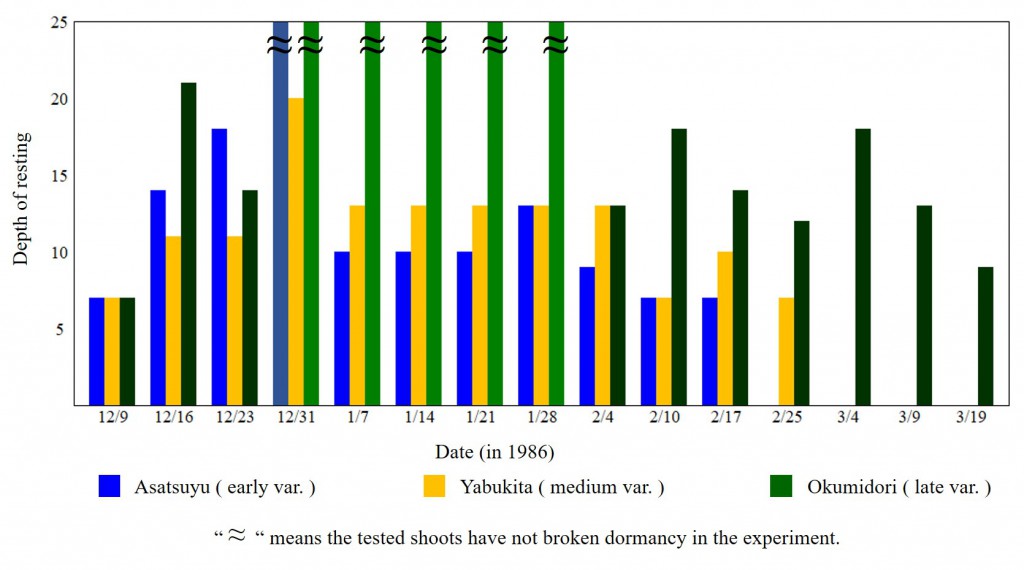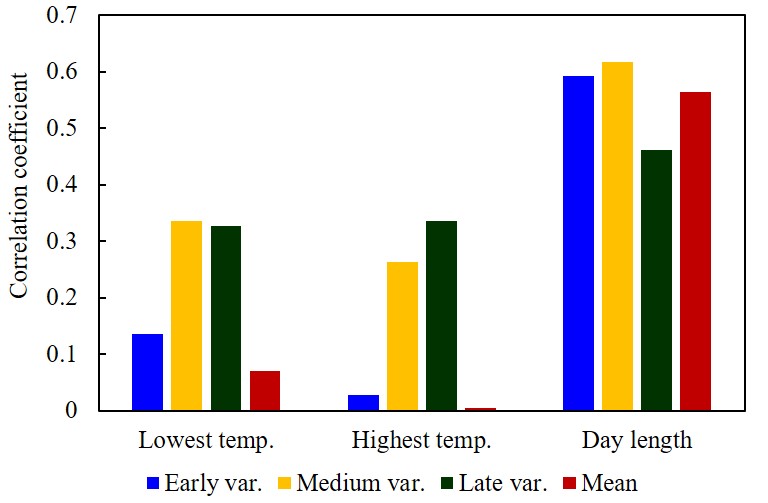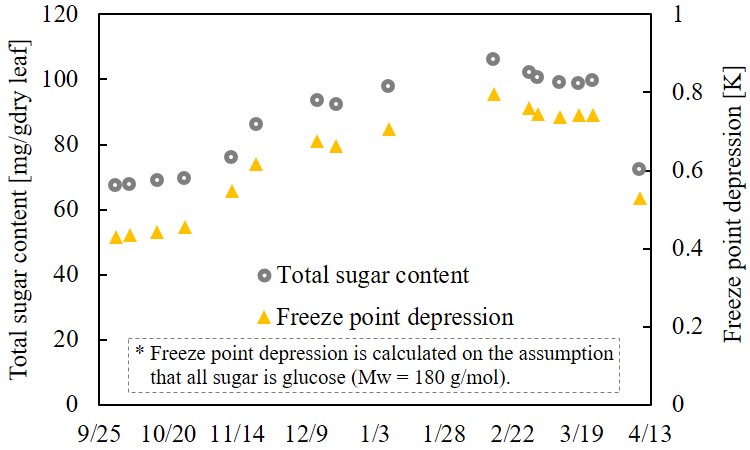“Hatsuyume”, the first dream in the night at 1st Jan., is considered to be an auspicious sing for the year. Especially appearance of 3 lucky signatures, Mt. Fuji, hawks and eggplant, are believed to provide good lucks. Now in January, tea plants have already undergone dormancy. Do they dream they could become more excellent and flavorful?
As it gets colder, tea plants undergo dormancy. Hachinohe et al. (1988) reported dormancy of tea plants starts from approx. middle of December caused by mainly short day condition and the beginning of dormancy is likely to be independent from the difference in varieties [326]. On the other hand, they clarified dormancy break and depth of resting depend on the inherent characteristics of each cultivar. Early sprouting cultivars ( early var. ) awake from early to middle of February. Late sprouting cultivars ( late var. ) awake from middle to end of March, as shown in Fig.1.

Fig.1 Comparison of dormancy period of each cultivar. *This figure is drawn based on the results reported by Hachinohe et al. (1988) [326].
As well as the quality of sleep effects activity of human, the depth of dormancy could also affect the yield and quality of tea. From the viewpoint, Hachinohe et al.(1988) investigated the depth of dormancy by measuring days required for cut-shoots sprouting in growth chamber. The result is depicted in Fig.2.

Fig.2 Change of dormancy depth of each tea cultivar with elapse time. *This figure is drawn based on the results reported by Hachinohe et al. (1988) [326].

Fig.3 Correlation coefficient between dormancy depth and environmental factors. *This figure is drawn based on the results reported by Hachinohe et al. (1988) [326].

Fig.4 The depth of dormancy and cold stress tolerance of leaves and shoots of 3 tea varieties. *This figure is drawn based on the results reported by Yanase (1972) [326].
As for the relation between water condition inside cell and cold stress tolerance, freezing point depression should be considered as one of the main factors. Change of freeze point depression was depicted with elapse time as follow, based on the dataset of water content, total sugar content in matured tea leaves in winter time.

Fig.5 Freeze point depression derived from only sugar content. Freeze point depression was calculated using the constant 1.86 [K kg/mol] of water and dataset of total sugar content written in reported by Fuchinoue & Fuchinoue (1999).
Hopefully may well dormancy provides excellent tea dreamy sweet in this year!
< References >
[326] Hachinohe M., Kondo S., Ikeda N., Wada K., Nesumi A. (1988) : Varietal Characteristics of Dormancy and Effects of Climatic Factors in Tea (Camellia sinensis (L.) O Kunte) Growing in a War Climatic Region, Reports of NARO Institute of Vegetable and Tea Science D, 1:69-78.
[329] Wang X., Hao X., Ma C. (2014) : Identification of differential gene expression profiles between winter dormant and sprouting axillary buds in tea plant (Camellia sinensis) by suppression subtractive hybridization, Tree Genetics & Genomes 10:1149-1159.
[330] Vyas D. Kumar S., Ahuja P.S. (2007) : Tea (Camellia sinensis) clones with shorter periods of winter dormancy exhibit lower accumulation of reactive oxygen species, Tree Physiology 27:1253-1259.
[334] Yanase Y. (1972) : Dormancy and cold stress tolerance of tea shoots in winter time, Proceeding of Japanese Society of Plant Physiologist, 13:96-97.
